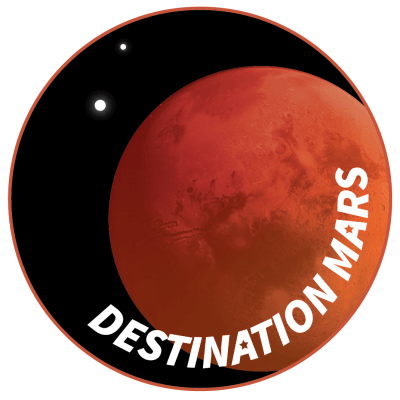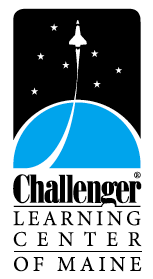Destination Mars Virtual Mission
Researchers are ready to explore Mars, but there’s one glaring problem- more than 40 million miles separate Earth from the Red Planet. This distance makes it impossible to travel back and forth between the two planets while completing our research.
This mission is recommended for 4th and 5th and 6th graders who have access to a computer that has internet access, a microphone, and a camera.

Mission
The Mission: Researchers are ready to explore Mars, but there’s one glaring problem – more than 40 million miles separate Earth from the Red Planet. This distance makes it impossible to travel back and forth between the two planets while completing our research. We need to build a base on one of the Red Planet’s moons, Deimos or Phobos, that will allow us to send a spacecraft to the surface of Mars and back in the fastest and safest way possible. Student teams will select which moon is best to build a base by analyzing three sets of data collected by rovers on Deimos and Phobos.
The team’s research efforts come to a halt when they encounter a critical emergency – a solar storm approaches and all communication signals are lost. To successfully explore Mars’ moons and complete the mission, the students must work together to protect the rovers and restore communication, analyze the data from their experiments, and select a moon to build a base.
Teams and Objectives

Geology Team
Explore terrain maps to analyze the features of the lunar surfaces in search for a location for a suitable human habitat. Conduct tests at each of these locations to determine levels of iron found in the region.

Navigation Team
Analyze terrain maps of the lunar surfaces to determine the best possible routes for the rovers. Explore interactive maps to analyze the satellite communication signals available in the area.

Conditions Team
Conduct tests on both lunar surfaces to analyze the radiation exposure levels at each location, as well as temperature ranges found across the region.

Rover Team
Calibrate and examine all of the required instruments on the rover to aid in exploration. Select additional instruments to incorporate more design features to be used on future missions.
Alignment with Next Generation Science Standards and Common Core State Standards
Geology Team
- SEP 5: Support an argument with evidence, data, or a model.
- SEP 6-8: Analyze and interpret data to determine similarities and differences in findings.
- MS-ESS1-3: Analyze and interpret data to determine scale properties of objects in the solar system.
Common Core State Standards
- L.6.6.C: Acquire and use accurately grade-appropriate general academic and domain-specific words and phrases.
- SL.6.1: Engage effectively in a range of collaborative discussions.
- MP1: Make sense of problems and persevere in solving them.
- MP6: Attend to precision.
Navigation Team
- SEP 5: Support an argument with evidence, data, or a model.
- SEP 6-8: Analyze and interpret data to determine similarities and differences in findings.
Common Core State Standards
- L.6.6.C: Acquire and use accurately grade-appropriate general academic and domain-specific words and phrases.
- SL.6.1: Engage effectively in a range of collaborative discussions.
MP1: Make sense of problems and persevere in solving them. - MP6: Attend to precision.
Conditions Team
- SEP 5: Support an argument with evidence, data, or a model.
- SEP 6-8: Analyze and interpret data to determine similarities and differences in findings.
- MS-ESS1-3: Analyze and interpret data to determine scale properties of objects in the solar system.
Common Core State Standards
- L.6.6.C: Acquire and use accurately grade-appropriate general academic and domain-specific words and phrases.
- SL.6.1: Engage effectively in a range of collaborative discussions.
- MP1: Make sense of problem
Rover Team
- SEP 5: Support an argument with evidence, data, or a model.<
- SEP 6-8: Analyze and interpret data to determine similarities and differences in findings.
Common Core State Standards
- L.6.6.C: Acquire and use accurately grade-appropriate general academic and domain-specific words and phrases.
- SL.6.1: Engage effectively in a range of collaborative discussions.
- MP1: Make sense of problems and persevere in solving them.
- MP6: Attend to precision

